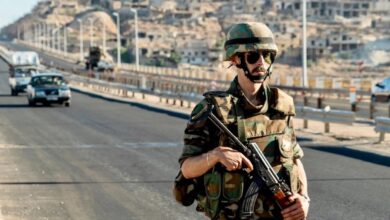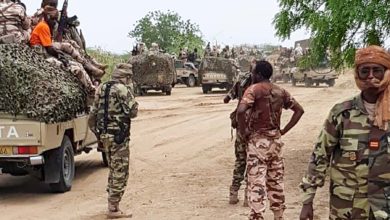
How terrorist groups and other violent non-state actors treat civilians can significantly affect how long such groups will last. As the militant group Ansar al-Sunna (ASWJ) actively expands its area of operations outside the occupied port town of Mocímboa da Praia in northern Mozambique, the insurgency’s treatment of civilians warrants attention.
To date, ASWJ’s strategy has been notably inconsistent, fluctuating between “hearts and minds” and “shock and awe.” Understanding ASWJ’s approach towards civilians is critical to providing them with adequate protection, as well as to crafting effective counterinsurgency measures against the group.
Impact on Civilians
Civilians continue to shoulder the brunt of the insurgency’s “success.” More than 309,000 Mozambicans are internally displaced, largely due to the conflict in the north. As insurgent control over roads increases, many fleeing civilians consider maritime routes to be the safest option, resulting in capsized ships and deaths at sea.
#MOZAMBIQUE 🇲🇿: Recent #insurgent activity in Macomia District has resulted in civilians fleeing the coastal town of Pangane. One of two laden #boats that departed to the #island of Matemo last week is said to have sunk, with reports of several civilian casualties. pic.twitter.com/mk8FtuFoeE
— Ambrey Intelligence (@Ambrey_Intel) October 9, 2020
Hundreds of thousands are also food insecure. The UN’s Famine Early Warning Systems Network has declared “crisis-level” food insecurity in the north, exacerbating pre-existing chronic hunger. Cabo Delgado province, the insurgency’s epicenter, has the country’s second-highest rate of chronic malnutrition.
On top of this, ASWJ has blocked access to basic services, including electricity, education, and medical care.
Hearts and Minds?
At times, ASWJ appears to employ a hearts and minds strategy in an attempt to gain the population’s support for tactical purposes (such as human intelligence), recruitment, and overall sustainability of the insurgency.
This strategy involves de-legitimizing the national government and its monopolization of the use of force to justify ASWJ’s actions and create a common enemy in the state.
Two important components of this strategy are the provision of services and the targeting of the state, such as infrastructure and personnel. For example, on April 7, ASWJ raided a World Food Programme-affiliated food warehouse and distributed its contents to the local population.
In another incident, insurgents distributed stolen medicine and fuel to residents perceived to be “loyal.” ASWJ has frequently targeted state assets, including administrative buildings, military posts, police stations, and state workers.
Additionally, on several occasions, the group has warned civilians of impending attacks and instructed them to leave the area. This was the case in March 2020 when ASWJ attackers warned residents of Quissanga about an upcoming attack on Mocímboa da Praia. Seven months later, the group gave poorer older civilians in the coastal areas of Macomia District $125 to flee impending attacks.
Shock and Awe?
At other times, ASWJ appears to employ a shock and awe strategy. The group exercises control and seeks to build legitimacy and notoriety by creating fear, utilizing violence, and projecting power. This primarily manifests as violent attacks against civilians, mass casualty attacks, and the deprivation of basic services.
ASWJ has prevented basic services and necessary medications from reaching some areas in northern Mozambique. In Cabo Delgado province, one of the country’s pandemic hotspots, this has complicated the government’s response to COVID-19.

Additionally, the group has carried out mass attacks and executed a campaign of violence against civilians, irrespective of age. Most notably, it executed over 50 individuals in Xitaxi in Muidumbe District after some locals refused to join the group.
Other recent attacks, although smaller in scale, include the beheadings of seven civilians on September 24 and a six-person family, including two children, on September 26. In each of these incidents, along with numerous other attacks, property was destroyed or stolen.
Future Trajectory
ASWJ’s strategy towards civilians has been strikingly inconsistent, making it difficult to assess its broader strategic aims.
Are they intentionally combining these strategies in the hopes of gaining recruits through popular support while simultaneously inducing concessions from the state through violence? Are they trying to command civilian respect through fear or coerce it through the distribution of minor services? If the group becomes more intimately tied to the Islamic State’s Central Africa Province, will they take a staunch “hearts and minds” or “shock and awe” stance?
These questions are yet to be answered, but with regard to the Islamic State, its treatment of civilians is not uniform across its factions. Thus, a stronger affiliation with Islamic State Central Africa Province will not inherently necessitate a “shock and awe” strategy. The Islamic State West Africa Province provides a good example: the group largely pursues a hearts and mind strategy on Lake Chad, which has contributed to its longevity.
Overall, tracking and better understanding of ASWJ’s approach to civilians will allow for more effective counterinsurgency and the protection of local populations.
 Kelly Moss is an African Maritime Security Researcher at Stable Seas, a program of One Earth Future. Her research and publication background focuses on terrorism and substate violence in sub-Saharan Africa. Kelly graduated from Georgetown University’s School of Foreign Service, where she received her master’s degree in Security Studies, and has worked at three U.S. federal government agencies, including the Bureau of African Affairs at the Department of State.
Kelly Moss is an African Maritime Security Researcher at Stable Seas, a program of One Earth Future. Her research and publication background focuses on terrorism and substate violence in sub-Saharan Africa. Kelly graduated from Georgetown University’s School of Foreign Service, where she received her master’s degree in Security Studies, and has worked at three U.S. federal government agencies, including the Bureau of African Affairs at the Department of State.
Disclaimer: The views and opinions expressed here are those of the author and do not necessarily reflect the editorial position of The Defense Post.
The Defense Post aims to publish a wide range of high-quality opinion and analysis from a diverse array of people – do you want to send us yours? Click here to submit an op-ed.











